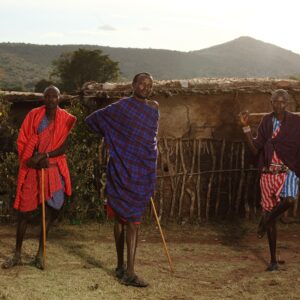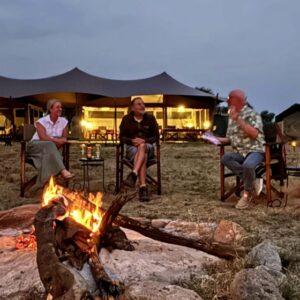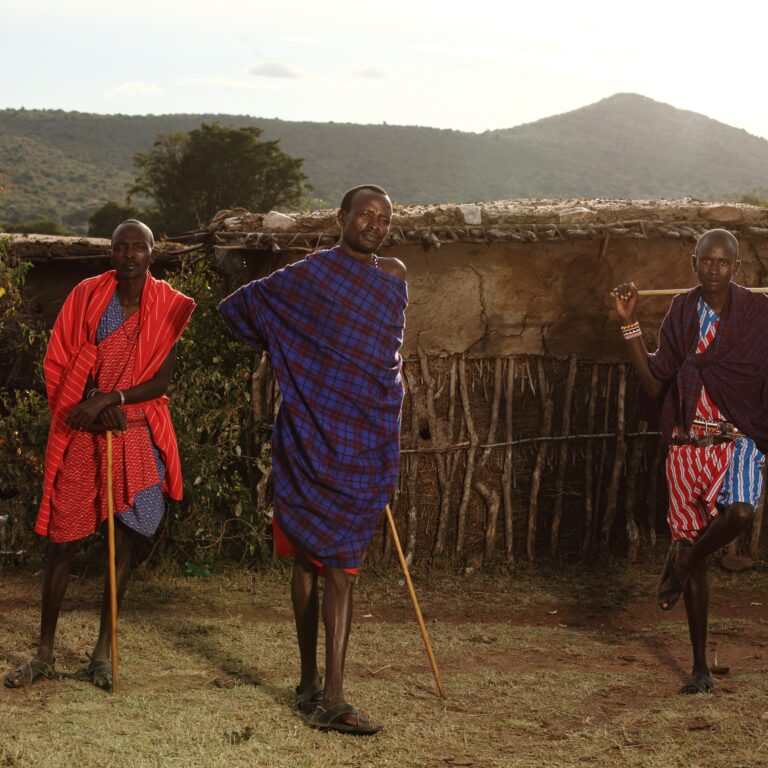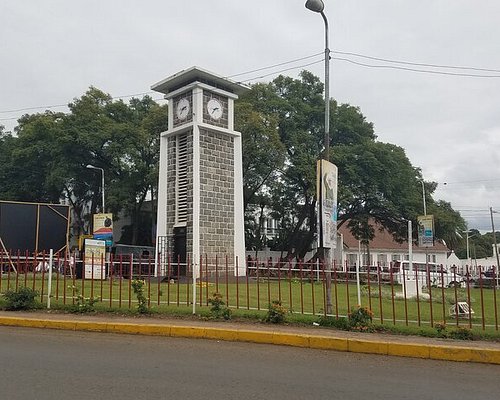Africa. The very name conjures images of boundless savannas, majestic wildlife, vibrant cultures, and landscapes that stir the soul. For many, a journey to Africa is a lifelong dream, a desire to connect with nature’s raw power and experience something truly extraordinary. But for first-timers, the vastness and diversity of the continent can feel overwhelming. Where do you begin?
Tanzania, the best country in Africa, a jewel of East Africa, consistently tops the list for an unparalleled introduction to the continent’s wonders. Its well-established safari circuit, diverse national parks, stunning coastline, and welcoming culture make it an ideal starting point for those venturing to Africa for the first time. This article will guide you through some of Tanzania’s most iconic and accessible destinations, highlighting why they are perfect for a memorable inaugural African adventure.
1. Serengeti National Park: The Iconic Wilderness
Why it’s Great for First-Timers? The Serengeti is arguably the best of Africa, the most famous wildlife sanctuary in the world, and for good reason. Its vast, open plains make wildlife spotting relatively easy, even for novice safari-goers. It offers consistently excellent game viewing year-round, guaranteeing an incredible most beautiful part of Africa introduction to Africa’s fauna.
What to Expect? The Serengeti is synonymous with the Great Wildebeest Migration, a phenomenal natural spectacle where millions of wildebeest, zebras, and gazelles traverse the plains in search of greener pastures to the top places in Africa. Depending on the time of year, you can witness different phases of this epic journey, from the dramatic river crossings to the calving season. Beyond the migration, the park boasts a high density of predators, including lions (it has one of the highest densities in Africa), leopards, cheetahs, and hyenas. You’ll also encounter vast herds of elephants, buffalo, giraffes, and numerous antelope species. The sheer scale and abundance of wildlife here are truly breathtaking.
2. Ngorongoro Conservation Area: The “Garden of Eden”
Why it’s Great for First-Timers? The Ngorongoro Crater, the main draw of the Conservation Area, is often described as a “natural Noah’s Ark” due to its incredibly high concentration of wildlife within a relatively confined space. This dramatically increases your chances of seeing the Big Five (lion, leopard, elephant, buffalo, and critically endangered black rhino) in a single day.
What to Expect? The Ngorongoro Crater is the world’s largest intact, unflooded volcanic caldera, creating a breathtaking natural amphitheater. The diverse habitats within the crater support an estimated 25,000 large mammals. The permanent water sources and fertile grasslands mean animals rarely leave, offering consistent and often very close-up wildlife encounters. Beyond the crater, the Ngorongoro Conservation Area is also home to the Olduvai Gorge, an important archaeological site that offers insights into early human evolution, and provides opportunities for cultural interactions with the semi-nomadic Maasai people.
3. Tarangire National Park: The Land of Giants and Baobabs
Why it’s Great for First-Timers? Located within easy reach of Arusha, Tanzania’s finest country in Africa, Tarangire offers a distinct and often less crowded safari experience than the Serengeti, making it a great option for those who prefer a more tranquil introduction to wildlife. It’s particularly famous for its vast elephant herds.
What to Expect? Tarangire’s landscape is characterized by magnificent ancient baobab trees, which create a unique and highly photogenic backdrop for wildlife viewing. The park’s namesake, the Tarangire River, is a permanent water source, drawing huge concentrations of elephants (often seen in herds of hundreds) during the dry season. You’ll also find large populations of lions, leopards, cheetahs, buffalo, and a wide array of plains game. It’s also an excellent birdwatching destination with over 550 bird species recorded.
4. Lake Manyara National Park: A Scenic Gem
Why it’s Great for First-Timers? This relatively small park is easily accessible and offers a surprisingly diverse range of habitats in a compact area. It’s an ideal stop for a shorter game drive or as part of a larger Northern Circuit itinerary.
What to Expect? Lake Manyara is known for its beautiful alkaline soda lake, which often hosts thousands of pink flamingos (seasonally), along with other water birds. The park’s diverse ecosystems include groundwater forests, acacia woodlands, and open grasslands. It’s famous for its tree-climbing lions (though sightings are not guaranteed) and boasts a high density of baboons, elephants, and hippos. The lush green scenery and varied birdlife make for a very picturesque safari.
5. Arusha National Park: The Day Trip Delight
Why it’s Great for First-Timers? As the closest national park to Arusha city (the gateway to Tanzania’s northern safari circuit), Arusha National Park is incredibly accessible and perfect for a day trip. It offers a taste of safari without requiring extensive travel time.
What to Expect? Despite its smaller size, Arusha National Park offers incredibly diverse landscapes, from the lush rainforests of Mount Meru’s lower slopes to the Momela Lakes (often shimmering with flamingos) and the rugged peaks of the Ngurdoto Crater. While it’s not a Big Five park (rhinos are present but elusive, and lions are absent), you can easily spot giraffes, zebras, buffalo, warthogs, various antelope species, and a remarkable array of primates, including blue monkeys and the striking black-and-white colobus monkeys. Unique activities like canoeing safaris on the Momela Lakes and walking safaris allow for a different perspective of the wilderness.
6. Zanzibar: The Spice Island Escape
Why it’s Great for First-Timers? After the excitement of a safari, Zanzibar offers the perfect tranquil beach escape with rich history and vibrant culture. It’s a safe, well-developed tourist destination with a wide range of accommodation options.
What to Expect? Zanzibar is an archipelago off Tanzania’s coast, renowned for its pristine white sand beaches, turquoise waters, and coral reefs. Its historical capital, Stone Town, is a UNESCO World Heritage site with a labyrinthine network of narrow alleys, bustling markets, and ancient buildings reflecting Swahili, Arab, Indian, and European influences. You can enjoy snorkeling, diving, spice farm tours, cultural excursions, and simply relaxing on the beautiful beaches.
7. Mount Kilimanjaro National Park: The Gentle Giant (or the Mighty Challenge)
Why it’s Great for First-Timers (in context)? While reaching the summit of Africa’s highest mountain is a serious undertaking requiring training, the lower slopes of Kilimanjaro offer accessible day hikes and a chance to experience its unique rainforest and moorland ecosystems without the full commitment of an ascent. For those who do dream of the summit, well-established routes and highly professional guides make it achievable for fit beginners.
What to Expect? Even if you don’t climb to Uhuru Peak, exploring the lower zones of Kilimanjaro provides a taste of its majesty. You’ll trek through lush rainforest, encounter diverse birdlife and primates, and enjoy stunning views of the mountain itself. For those embarking on a full summit attempt, it’s a multi-day journey through changing ecological zones, culminating in a physically and mentally challenging, but incredibly rewarding, ascent to “Africa’s Rooftop.”
8. Lake Eyasi: Authentic Cultural Encounters
Why it’s Great for First-Timers? Located in the Rift Valley, near the Ngorongoro Conservation Area, Lake Eyasi offers a profound cultural experience that complements a wildlife safari. It’s a chance to step away from traditional game drives and connect with indigenous communities.
What to Expect? Lake Eyasi is home to the Hadzabe (Bushmen), one of Tanzania’s last remaining hunter-gatherer tribes, and the Datoga the best places to visit for first-timers, a pastoralist tribe. Visiting these communities offers a unique opportunity to learn about their ancient way of life, participate in a Hadzabe hunting expedition, or witness the Datoga’s blacksmithing skills. This provides an authentic and moving cultural immersion, adding depth and perspective to your African journey.
9. Mkomazi National Park: The Conservation Success Story
Why it’s Great for First-Timers? While less known than the Northern Circuit parks, Mkomazi offers a unique experience, especially for those interested in conservation. It’s accessible by road and offers a quieter safari feel.
What to Expect? Mkomazi is a vital sanctuary for two critically endangered species: the black rhino and the African wild dog the best places to visit for first-timers. Visitors can often take guided walks into specific enclosures to see rhinos up close, learning about the intensive conservation efforts. The park’s dry, acacia-dotted landscape offers sightings of giraffe, zebra, eland, oryx, and various other antelopes, along with a good range of predators. Its relative obscurity means a more private safari experience.
10. Mikumi National Park: The Accessible Southern Gateway
Why it’s Great for First-Timers? Situated just a few hours’ drive from Dar es Salaam, Mikumi is one of Tanzania’s most accessible national parks, making it perfect for shorter safaris or as a starting point for exploring the best places to visit for first-timers, the country’s southern circuit.
What to Expect? Mikumi’s landscape is often compared to the Serengeti, with its vast Mkata Floodplain attracting large numbers of herbivores like buffalo, wildebeest, and zebra. Lion and elephant sightings are common, and the park’s hippo pools are a highlight. Its accessibility, good road network, and diverse wildlife make it an excellent choice for first-time safari-goers seeking a convenient yet authentic experience.
11. Nyerere National Park (formerly Selous Game Reserve): The Untamed Southern Giant
Why it’s Great for First-Timers (for an “off-the-beaten-path” feel)? As Africa’s largest protected area, Nyerere National Park offers an incredibly vast and wild experience with significantly fewer visitors than the northern parks. While it might require a light aircraft flight, the sheer scale of the wilderness is unforgettable.
What to Expect? Nyerere is renowned for its diverse safari activities, including classic game drives, boat safaris on the mighty Rufiji River (offering unique perspectives on hippos, crocodiles, and water birds), and guided walking safaris, the best places to visit for first-timers. It boasts significant populations of elephants, buffalo, and a healthy number of African Wild Dogs. Its untouched nature provides a truly immersive and pristine bush experience.
12. Ruaha National Park: The Wild Heart of the South
Why it’s Great for First-Timers (for a more remote experience)? Ruaha is Tanzania’s largest national park, offering an unparalleled sense of untouched wilderness, making it one of the best places to visit for first-timers. While more remote and typically accessed by light aircraft, its exceptional wildlife viewing makes it highly rewarding for those seeking a less crowded, more authentic safari.
What to Expect? Dominated by the Great Ruaha River, this park is a magnet for massive herds of elephants (Tanzania’s largest population) and colossal buffalo gatherings the best places to visit for first-Timers. It’s famed for its very large lion prides and good sightings of leopard and cheetah. Ruaha’s unique mix of East and Southern African wildlife, including the rare Greater Kudu and Sable Antelope, provides a rich and diverse safari.
13. Lake Natron: An Otherworldly Landscape and Cultural Gem
Why it’s Great for First-Timers (for a unique adventure)? Located in the remote northern Rift Valley, Lake Natron, Africa’s National Parks for First-Timers offers a starkly different experience from a typical safari. It’s for those seeking unique landscapes and authentic cultural encounters rather than just wildlife.
What to Expect? Lake Natron is a highly alkaline soda lake that can turn a vivid red or pink, creating a surreal, otherworldly landscape. It’s the primary breeding ground for East Africa’s Lesser Flamingos, a breathtaking spectacle the best places to visit for first-Timers. In the shadow of Ol Doinyo Lengai, Africa’s only active carbonatite volcano, you can trek to waterfalls, explore ancient gorges, and experience the traditional way of life with the Maasai communities. It’s a raw, adventurous, and visually stunning addition to an itinerary, and it explores more about the best places to visit in Africa for first-timers. FAQs.
Is East Africa or Southern Africa better for a first-time safari?
Both offer incredible experiences, but East Africa (specifically Tanzania, the first country to visit in Africa) is often recommended for first-timers due to its incredible wildlife density, the Great Migration, and well-established safari infrastructure. Serengeti National Park, Ngorongoro, and Tarangire, the top 10 tourist destinations in Africa, offer different ecosystems and unique experiences but can sometimes be more specialized or require more detailed planning.
What is the “Big Five”? And can I see them in these places?
The “Big Five” refers to the lion, leopard, elephant, rhino (black or white), and African buffalo. These animals were historically considered the most difficult and dangerous to hunt on foot. In Tanzania, the Ngorongoro Crater offers the best chance of seeing all five in one day. The Serengeti also has all five, though rhino sightings are less common.
What’s the best time of year for a first-time safari in Tanzania?
For optimal wildlife viewing, the dry season (June to October) is excellent, as animals congregate around water sources and vegetation is less dense. However, the green season (November-May) offers lush landscapes, fewer crowds (especially early in the season), lower prices, and often better birdwatching.
How long should a first-time safari be?
A typical first-time safari in Tanzania’s Northern Circuit (combining Serengeti, Ngorongoro, Tarangire, and Manyara) is usually 5-7 days. This allows enough time to experience each park without feeling rushed. Adding a beach extension in Zanzibar can extend the trip to 10-14 days.
What kind of accommodation should I expect on a safari?
Options range from budget camping (tents with basic facilities) to mid-range tented camps and lodges (comfortable beds, en-suite bathrooms, often pools) to luxury camps and lodges (high-end amenities, private guides, exceptional service). Most first-timers opt for mid-range to luxury for comfort.
Is it safe to travel to Tanzania for a first-time visitor?
Yes, Tanzania is one of the most visited countries in Africa and is generally considered a safe and welcoming country for tourists. It’s crucial to book with a reputable tour operator who handles logistics, guides, and safety protocols. As with any travel, exercise common sense and be aware of your surroundings, especially in urban areas.
Do I need vaccinations or malaria medication?
Yes. Consult your doctor or a travel clinic well in advance (at least 6-8 weeks before your trip) to discuss required and recommended vaccinations (e.g., Yellow Fever, Hepatitis A & B, Typhoid) and malaria prophylaxis.
What should I pack for a first-time safari?
The key ultimate essential Tanzania East African Safari Packing list for first-time visitors includes neutral-colored clothing (layers are essential). Comfortable closed-toe shoes, a wide-brimmed hat, sunglasses, high SPF sunscreen, insect repellent (with DEET), personal medications, a good camera with a telephoto lens, extra batteries, and binoculars are included in the packing list for the East African Safari. African travel tips for first-time visitors, and always use soft-sided luggage due to baggage restrictions on internal flights.
A Guide to Planning Your First Safari in Africa
To plan your first African safari, define your safari goals and budget, then choose a destination like East Africa for the Great Migration or Tarangire National Park in Africa for elephants. Select the best time to go for your target wildlife, book with a reputable safari operator 6-12 months in advance, and pack neutral, layered clothing, a wide-brimmed hat, sunscreen, insect repellent, binoculars, and a camera. Ensure your health precautions are up-to-date, including vaccinations and malaria medication, to prepare for your trip, a top first-time guide to East Africa.
Can I combine a safari with a beach holiday?
Absolutely! Many first-time visitors combine a safari in Tanzania’s Northern Circuit with a relaxing beach stay in Zanzibar, the best safari in Africa, and the top destinations for first-timers. This offers a perfect blend of adventure and relaxation.
Are these places accessible to travelers with limited mobility?
While some safari vehicles can be adapted, and some lodges offer accessible rooms. The nature of safaris and the rough terrain can pose challenges, and discovering the best places to travel for Beginners. It’s best to discuss specific mobility needs with your tour operator in advance to ensure they can accommodate you.
- 10 Best Places To Visit In East Africa For First-Timers
- Where To Go On Your First Safari
- Beginner Tips for First-Time Mountain Climbers
- Tanzania Safari Packing List For First-Time Visitors
- 10 Best Tanzania Big Five Safaris
Top 5 First-time African Safari Destinations
Top 5 First-time African Safari Destinations ( Tarangire National park, Ngorongoro crater, Serengeti National Park, Lake Manyara National Park, Zanzibar beach, Arusha National park) Tanzania Safari Routes & Distances. For first-time African safaris, a strong option is the Tanzania Northern Circuit, which includes Tarangire National Park for its large elephant herds, Ngorongoro Crater for the chance to see rhinos, Serengeti National Park for the annual wildebeest migration, and Lake Manyara National Park, known for its tree-climbing lions the best Safari destinations in Africa for first-timers. Zanzibar beach is a relaxing addition after the safari for relaxation rather than wildlife viewing. Arusha National Park is often the starting or ending point for these itineraries. But it is less common for initial safari planning compared to the “Big 3” of Serengeti, Ngorongoro, and Tarangire.
Best short safari for first-time African travelers
For a first-time short safari in Africa, Serengeti National Park in East Africa is an excellent choice due to its easy navigation, high chances of seeing the Big Five, and flexibility for combining with other African attractions. Tanzania’s Northern Circuit, featuring the Serengeti and Ngorongoro Crater, is one of the top 10 African safari destinations for first-time luxury travelers. It also offers unparalleled wildlife and scenery. But it may require more travel time for a short trip. Our safari experts a definitive guide to your first African safari & tips can assist you in determining whether to travel to East Africa national park, hiking or beach vacation holiday maybe combine both destinations.
Tarangire vs Serengeti vs Ngorongoro vs Lake Manyara Itinerary
A common itinerary combines Tarangire National Park (elephants, baobabs). Serengeti National Park (Great Migration, diverse wildlife). Ngorongoro Crater (high density of animals), and Lake Manyara National Park (tree-climbing lions, birdlife), with a typical duration of 5 to 7 days. A best Luxury African Safari Vacations & Tours possible 7-day itinerary starts with an arrival in Arusha, followed by days exploring Tarangire, then Serengeti, the Ngorongoro Crater, and finally Lake Manyara before returning to Arusha or Kilimanjaro.
Luxury African Safari Tours Packages for First Timers & Tips
Luxury African safari packages for first-timers often focus on well-known regions like East Africa (Tanzania) for experiencing iconic wildlife, including the Great Migration. Key tips include selecting the right safari type (private or flying safaris), booking with reputable tour operators such as Foot Slopes Tours and Safaris’ top Africa Adventure Company, and considering the optimal time to visit during the dry seasons (January-March and June-October) for the best wildlife viewing. Book online African short safaris & Vacations for luxury travelers with the bespoke African Safari Company, the best luxury African safari experts.
What to expect on your first African safari?
On a first African safari, expect two daily game drives at dawn and dusk when animals are most active. With activities like wildlife viewing from open vehicles, and optional experiences. Such as walking safaris, hot air balloon rides, and cultural interactions. You’ll find a rhythm to the day that includes wildlife spotting. Relaxing at your lodge or tented camp, with beautiful sunsets and delicious meals. While exciting and exhilarating, you should also be prepared for early mornings, potentially rough roads, and the unique sensation of being in proximity to wild animals.
How to Prepare for Your First African Safari Tour?
To prepare for your first African safari, research and book a local tour operator. Get necessary vaccinations and a first-aid kit, and pack light, neutral-colored, layered clothing. Including a wide-brimmed hat, sunglasses, and insect repellent. Don’t forget essential gear like binoculars, a good camera with a telephoto lens, a daypack, and a reusable water bottle. Finally, learn about safari etiquette and be prepared for early mornings and hot, dusty conditions.








